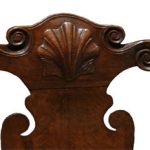We may receive a commission when you use our affiliate links. However, this does not impact our recommendations.
Master Cabinetmaker Thomas Chippendale (1718-1779) recommended that cabinetmakers learn drafting so that they could “shew…the Conduct and Effect of the Piece.” I haven’t found my drafting abilities particularly helpful as a cabinetmaker. What has helped is sketching. I bring my camera when I visit museums, but I also bring a pencil and a note pad (ask to make sure its okay in advance).  I may not draw an entire piece- in fact I never do. I draw little details that strike my fancy. When your place pencil to paper, you must decide where each line starts and stops. A faithful rendering requires the various proportions and relationships to be correct. Even if you stink as an artist, drawing requires that you look carefully. So it’s a helpful way to get to know a piece better. Drawing encourages you to develop the skill of analyzing shapes and seeing relationships between features. This is a skill every woodworker needs. I recommend developing this skill with pencil and paper instead of Cuban mahogany.
I may not draw an entire piece- in fact I never do. I draw little details that strike my fancy. When your place pencil to paper, you must decide where each line starts and stops. A faithful rendering requires the various proportions and relationships to be correct. Even if you stink as an artist, drawing requires that you look carefully. So it’s a helpful way to get to know a piece better. Drawing encourages you to develop the skill of analyzing shapes and seeing relationships between features. This is a skill every woodworker needs. I recommend developing this skill with pencil and paper instead of Cuban mahogany.
Here are some supplies and tools we find essential in our everyday work around the shop. We may receive a commission from sales referred by our links; however, we have carefully selected these products for their usefulness and quality.








I have encountered the restriction that Adam mentions at the Biltmore House (Asheville, NC) where visitors are instructed (via placards in each room) not to draw, much less take pictures of the items on display. I hadn’t noticed the placards untill after I finished a hasty drawing of a furniture detail. Perhaps I wasn’t seen or more likely, the doyens on patrol may have observed that my drawing bore little resemblence to any item on display.
Well said.
Did you mean to check about bringing the camera, or the pencil and sketch pad? I have never had a problem with sitting down to draw in a museum, but it is a good idea to bring a small portable chair if possible. It gets uncomfortable kneeling down or leaning against a wall for any length of time.